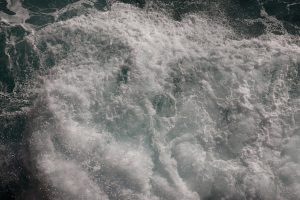
The five leading antifoaming agents for pulp and paper processing include:
- Silicone-Based Agents – Deliver rapid, long-lasting foam suppression.
- Fatty Alcohol-Based Agents – Offer excellent compatibility with alkaline systems.
- Polyether-Based Agents – Provide strong performance in high-temperature applications.
- Mineral Oil-Based Agents – Cost-effective for general-purpose foam control.
- Natural Oil-Based Agents – Support sustainability with biodegradable formulas.
Foam formation in pulp mills leads to equipment inefficiency, poor sheet formation, drainage issues, and higher operational costs. Selection of the right agent remains essential for effective pulp processing foam control and improved production outcomes.
| Aspect | Details |
|---|---|
|
Market Size 2022 |
USD 1.2 Billion |
|
Projected Market Size 2030 |
USD 1.8 Billion |
|
CAGR (2024-2030) |
6.2% |
|
Key Drivers |
Demand for high-quality paper, packaging growth, sustainability trends |
|
Sustainability Focus |
Growing demand for biodegradable and eco-friendly anti-foaming agents |
Key Takeaways
- Foam causes many problems in pulp processing, like poor paper quality, slower production, and higher costs, so controlling foam is essential.
- Silicone-based agents work best for most pulp processes because they reduce foam quickly and handle high temperatures and different pH levels.
- Choosing the right antifoaming agent depends on the process stage, temperature, pH, and environmental rules to ensure safety and efficiency.
- Sustainable options like fatty alcohol and natural oil-based agents help mills reduce environmental impact while maintaining good foam control.
- Proper dosing and expert advice prevent issues like deposits and paper defects, improving product quality and lowering operational costs.
Foam Control Importance

Process Impact
Foam presents a persistent challenge in pulp and paper mills. During pulping, bleaching, washing, and paper machine operation, excessive foam disrupts the process and leads to several operational issues.
- Foam causes inconsistent pulp quality and increases deposition on equipment surfaces.
- Poor drainage and fiber loss occur, which slows production and reduces efficiency.
- Water, chemical, and energy consumption rise as operators attempt to manage foam-related problems.
- Pump cavitation and improper sheet formation can result, leading to equipment wear and higher maintenance costs.
- Effluent treatment becomes more difficult, as foam carries fibers and chemicals into wastewater streams.
These problems collectively reduce process efficiency and product quality. Foam formation often results from surfactants, resins, and mechanical agitation within the system. When foam accumulates, it causes overflow, slows production speeds, and reduces runnability. Defoamers play a critical role in pulp processing foam control by stabilizing operations, enhancing drainage, and ensuring smoother paper formation. Effective defoamers withstand high temperatures, varying pH, and mechanical shear, making them essential for maintaining stable production and consistent quality.
Agent Selection Value
Choosing the right antifoaming agent directly impacts the success of pulp processing foam control. Each process presents unique challenges, so operators must consider several factors:
- The specific application and use-case for the antifoaming agent.
- The composition of the foaming media and the operational conditions, such as temperature, pH, and agitation.
- Regulatory or legal requirements that may affect agent selection.
- The choice between emulsion-based and 100% active antifoams, depending on dosing system capabilities and cost sensitivity.
- The types of foaming agents present in the system and the overall ecosystem.
A proactive approach to foam control, rather than a reactive one, ensures better results. Consulting with technical experts helps tailor foam control strategies to the mill’s specific needs. By carefully matching the antifoaming agent to the process, mills can achieve higher efficiency, lower costs, and improved product quality.
Top 5 Antifoaming Agents
Silicone-Based Agents
Silicone-based antifoaming agents dominate the pulp and paper industry, holding nearly half of the global market share. These agents feature polymers with silicon-oxygen backbones, such as polydimethylsiloxane, often delivered as oils or water-based emulsions. Their unique structure provides outstanding chemical inertia, low surface tension, and stability across a wide range of temperatures and pH levels.
Key Features:
- Highly effective at low concentrations
- Broad pH and temperature range (resist up to 150°C long-term, 300°C short-term)
- Excellent thermal and chemical stability
- Non-toxic and non-corrosive
Main Benefits:
- Rapid foam knockdown and persistent foam suppression
- Improved washing efficiency and drainage in pulp processing
- Reduced biological oxygen demand (BOD) in effluent
- Lower chemical and water consumption
Typical Use Cases:
- Pulp washing
- Bleaching
- Paper machine operation
- Effluent treatment
| Pros | Cons |
|---|---|
|
Powerful defoaming at low dosages |
Risk of deposition in high pH/temperature environments |
|
Wide application range |
Requires careful dosage and formulation |
|
High thermal and pH resilience |
Limited long-term resistance in strong alkali |
|
Cost-effective and non-polluting |
Oil solubility reduces effectiveness in oil-based systems |
|
Improves process efficiency and product quality |
Potential for gel formation and scaling if misapplied |
Note: Silicone-based agents remain the gold standard for pulp processing foam control due to their efficiency and adaptability, but mills must manage dosage and formulation to avoid operational issues.
Market Share Table:
| Antifoaming Agent Type | Key Characteristics | Market Share / Industry Use |
|---|---|---|
|
Silicone-based |
Highly effective at low concentrations; broad pH and temperature range; excellent thermal stability and chemical inertness |
Dominant globally with ~49.4% revenue share in 2023 |
|
Oil-based |
Use organic oils (mineral, vegetable); cost-effective; require higher concentrations; lower thermal stability |
Significant, but less than silicone-based |
|
Water-based |
Less emphasized; used but smaller segment |
Smaller segment |
Fatty Alcohol-Based Agents
Fatty alcohol-based antifoaming agents offer a silicone-free solution for pulp processing foam control, especially in alkaline and neutral systems. These agents derive from renewable sources, making them highly biodegradable and environmentally friendly.
Key Features:
- Silicone-free, preventing paper defects
- Low viscosity for easy pumping and dosing
- Excellent compatibility with sizing agents, retention aids, and strength agents
- Effective in temperatures from 20°C to 60°C
Main Benefits:
- Strong degassing and foam suppression in white water systems
- No interference with other papermaking additives
- High biodegradability and low toxicity
- Supports compliance with environmental regulations
Typical Use Cases:
- White water wet end of paper machines
- Boxboard, white board, corrugated paper, newsprint, and cultural paper production
- Water treatment in pulp and paper mills
Pros and Cons Table:
| Pros | Cons |
|---|---|
|
Environmentally friendly and biodegradable |
Less effective at very high temperatures |
|
Does not cause silicone-related paper defects |
May require continuous dosing |
|
Compatible with most papermaking chemicals |
Performance varies by product variant |
|
Easy to handle and dose |
Fatty alcohol-based agents provide a sustainable and effective option for mills seeking to minimize environmental impact while maintaining reliable foam control.
Polyether-Based Agents
Polyether-based antifoaming agents combine polyether segments with other polymers, often used alongside silicone defoamers. Their performance depends on temperature and moisture conditions, making them suitable for specific pulp processing foam control challenges.
Key Features:
- Temperature-sensitive solubility and defoaming action
- Rapid foam penetration and destruction
- Compatible with both water-based and oil-based systems
- Stable under high temperature, pressure, acid, and alkali
Main Benefits:
- Excellent defoaming efficiency at high temperatures
- Long-lasting foam inhibition
- Versatile for complex production environments
Typical Use Cases:
- High-temperature pulp processing
- Processes with fluctuating moisture and temperature
- Applications requiring rapid foam elimination
Pros and Cons Table:
| Pros | Cons |
|---|---|
|
Superior performance in high-temperature environments |
Less stable than silicone defoamers overall |
|
Rapid and persistent foam control |
Effectiveness varies with temperature |
|
Compatible with diverse chemical systems |
May require careful selection for each process |
Polyether-based agents excel in demanding conditions where other defoamers may lose effectiveness, making them valuable for mills with high-temperature or variable processes.
Mineral Oil-Based Agents
Mineral oil-based antifoaming agents use liquid mineral oil combined with hydrophobic solids like silica or waxes. These agents offer a cost-effective solution for general-purpose foam control in pulp and paper operations.
Key Features:
- Good spreading properties
- Partly insoluble in foaming media
- Suitable for a wide pH range
- Inert and stable under typical process conditions
Main Benefits:
- Effective foam suppression in pulp washing and bleaching
- Maintains smooth operation and high-quality output
- Cost-effective for large-scale applications
Typical Use Cases:
- Pulp washing
- Bleaching
- General foam control in various process stages
Pros and Cons Table:
| Pros | Cons |
|---|---|
|
Affordable and widely available |
Lower thermal stability than silicone-based |
|
Effective in many pulp and paper processes |
May cause deposition if not properly selected |
|
Easy to mix and dose |
Requires careful matching to process conditions |
Mineral oil-based agents provide reliable foam control for mills focused on cost efficiency, but operators must ensure compatibility with process conditions to prevent operational issues.
Natural Oil-Based Agents
Natural oil-based antifoaming agents, derived from vegetable oils or proteins, offer a sustainable and non-toxic alternative for pulp processing foam control. These agents align with industry trends toward greener, safer chemicals.
Key Features:
- Biodegradable and environmentally friendly
- Non-toxic and safe for workers
- Compatible with a wide range of chemicals and water types
- Effective at low concentrations
Main Benefits:
- Reduces chemical pollution and protects ecosystems
- Enhances machinery efficiency and paper quality
- Lowers maintenance costs and operational delays
- Meets sustainability and regulatory requirements
Typical Use Cases:
- Pulp processing and papermaking
- Applications requiring rapid and persistent foam control
- Mills prioritizing environmental stewardship
Pros and Cons Table:
| Pros | Cons |
|---|---|
|
Environmentally sustainable and biodegradable |
Higher initial cost than mineral oil-based |
|
Non-toxic and safe for operators |
May require higher dosages in some cases |
|
Compatible with most pulp processing chemicals |
Performance can vary by formulation |
|
Reduces need for additional additives |
Natural oil-based agents support mills in meeting sustainability goals while ensuring effective and reliable foam control throughout the pulp processing cycle.
Pulp Processing Foam Control Selection

Key Criteria
Selecting the right antifoaming agent requires a clear understanding of process variables and regulatory demands. Temperature, pH, and pulp composition each play a critical role. For example, temperature influences the hydrophilic-lipophilic balance of certain antifoam polymers, which means their effectiveness can change as the process heats up or cools down. pH levels affect chemical stability; some agents perform better in alkaline environments, while others suit neutral or acidic conditions. The composition of the pulp, including the presence of surfactants or natural foaming substances, determines the type of foam and the best agent to suppress it.
Environmental regulations also shape the selection process. FDA rules, such as 21 CFR 176.200 and 176.210, set strict limits on which antifoaming agents can be used in paper and board, especially for food contact. The industry has moved away from certain persistent chemicals, like long-chain perfluorinated compounds, due to toxicity and environmental persistence. Mills must ensure compliance by evaluating migration potential, toxicity, and exposure risks.
Tip: Always check for updated regulatory requirements and avoid agents that have been phased out due to environmental or health concerns.
Process Matching
A systematic approach helps match antifoaming agent properties to specific pulp processing foam control needs:
- Identify the exact stage in the pulp process where foam control is needed, such as washing, bleaching, or effluent treatment.
- Select the chemical type of antifoamer—silicone-based, mineral oil-based, or natural oil-based—based on compatibility with the pulp and process conditions.
- Confirm the agent’s effectiveness within the operating temperature range of the process.
- Ensure the product meets all regulatory and safety standards for the intended application.
- Evaluate foam characteristics, such as stability and drainage, to choose an agent that addresses these factors.
- Consult with technical experts or suppliers to tailor the formulation for both performance and compliance.
- Choose a product specifically designed for the application, referencing proven solutions for each process stage.
Common mistakes include ignoring the specific environment of the paper machine, using agents outside their optimal temperature range, and overusing defoamers, which can cause deposits and increase costs. Operators should also monitor chemical additives and mechanical factors, such as pump seals and turbulence, to minimize foam formation.
A practical checklist for selection:
- Assess process temperature and pH.
- Analyze pulp composition and foam type.
- Review regulatory requirements.
- Match agent chemistry to process needs.
- Avoid overuse and monitor for deposits.
- Collaborate with suppliers for best-fit solutions.
Comparison Table
Selecting the right antifoaming agent in pulp processing requires a clear understanding of efficiency, cost, and environmental impact. The table below summarizes how the top five agents compare across these critical factors.
| Antifoam Type | Efficiency (%) | Typical Dosage (g/m³) | Environmental Impact | Cost Considerations | Key Notes |
|---|---|---|---|---|---|
|
Silicone-Based |
0.5 |
Low toxicity, non-polluting |
Higher upfront, lower long-term cost |
Superior foam suppression, stable at high temp |
|
|
Fatty Alcohol-Based |
28 |
0.7 |
Highly biodegradable |
Moderate, supports sustainability |
Best for alkaline systems, eco-friendly |
|
Polyether-Based |
25 |
0.3 |
Some biotoxicity risk |
Moderate, may need careful application |
Excels at high temp, variable performance |
|
Mineral Oil-Based |
20 |
0.6 |
Pollution risk, oil sheen |
Low, but volatile due to oil prices |
Cost-effective, may cause deposits |
|
Natural Oil-Based |
Varies |
0.4–0.7 |
Biodegradable, non-toxic |
Higher initial, lower compliance costs |
Sustainable, safe for operators |
Companies like Kemira, Evonik, and BASF lead the market with innovative, sustainable defoamer solutions. Many now focus on low-VOC and biodegradable formulas to meet stricter regulations.
Silicone-based agents deliver the highest efficiency, often exceeding 98% foam reduction. Their low required dosage and chemical stability make them a preferred choice, especially where environmental compliance matters. Fatty alcohol-based and natural oil-based agents appeal to mills prioritizing sustainability, offering strong performance with minimal ecological impact. Polyether-based agents work well in high-temperature environments but may introduce biotoxicity concerns. Mineral oil-based agents remain cost-effective but can increase environmental compliance costs due to pollution risks and price volatility.
Switching from mineral oil-based to silicone-based agents often reduces operational costs over time, despite higher initial investment. Mills must consider not only the purchase price but also the potential for deposit formation, environmental fees, and process disruptions. Careful selection and application ensure optimal foam control, regulatory compliance, and long-term savings.
Antifoaming Agent Type Main Advantages Silicone-based
High stability and effectiveness at high temperatures
Mineral oil-based
Cost-effective and suitable for oil-based systems
Fatty alcohol-based
Biodegradable and non-toxic
Polyether-based
Effective at low concentrations, good chemical synergy
Natural oil-based
Sustainable, safe for operators
Selecting the right agent for pulp processing foam control requires careful evaluation of foam type, chemical compatibility, and application method. Technical experts recommend real-world testing to ensure consistent performance. Effective foam control improves drainage, reduces costs, and supports high product quality.
FAQ
What factors determine the best antifoaming agent for a pulp mill?
Operators should consider process temperature, pH, pulp composition, and regulatory requirements. Each agent type performs best under specific conditions. Consulting technical experts ensures the chosen agent matches the mill’s unique needs.
Are silicone-based antifoaming agents safe for food-grade paper production?
Most silicone-based agents meet FDA and EU standards for food contact. Mills must verify product certifications and ensure compliance with regulations before use in food-grade applications.
How can mills minimize environmental impact when using antifoaming agents?
Mills should select biodegradable or natural oil-based agents. Regular monitoring and proper dosing reduce chemical discharge. Partnering with suppliers who offer eco-friendly solutions supports sustainability goals.
What are common signs of overusing antifoaming agents?
- Increased deposits on equipment
- Reduced drainage efficiency
- Higher operational costs
Operators should monitor dosage and adjust based on process feedback.Can antifoaming agents affect paper quality?
Yes, improper selection or excessive use may cause defects, such as spots or reduced strength. Mills should test agents in small batches and monitor product quality closely.







